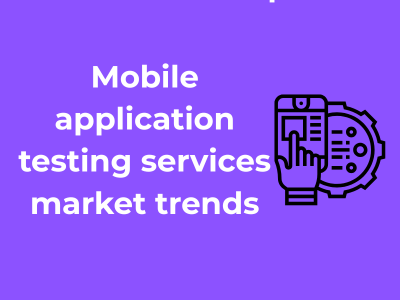The Early Days: A Simple Beginning
When mobile devices first entered the scene, apps were basic and limited in functionality. Testing, too, was straightforward and mostly manual. There wasn’t much focus on performance, user experience, or even security – the apps just needed to work on a single platform or device. With only a handful of operating systems and minimal hardware variations, testing wasn’t the complex ecosystem we see today.
The Growth of Smartphones: A Turning Point
The arrival of the smartphone era changed the game entirely. With the introduction of complex apps, diverse functionalities, and the fierce competition linked to app stores, testing mobile applications became a lot more intricate. Suddenly, testing expanded to include:
- Performance under varying conditions
- Compatibility across different devices and operating systems
- User interface (UI) and user experience (UX) validation
- Responsive design to adapt to varying screen sizes
Testers were no longer just ensuring the app worked—they now had to focus on ensuring polished, smooth, and user-friendly experiences.
The Rise of Automation Testing
With increasing complexities and shorter app development cycles, manual testing hit its limitations. This paved the way for automation testing. Tools like Selenium, Appium, and others became testers’ best friends, allowing them to run repetitive tests efficiently. The industry began to truly embrace the concept of “work smarter, not harder.”
Automation testing turned out to be a huge boon for regression testing, performance monitoring, and load testing—but it wasn’t the end of the story. As apps became more complex, so did testing techniques.
The Present: A Holistic Strategy
Fast forward to 2023, and mobile app testing is an impressive blend of automation, manual efforts, and emerging technologies. Today, testing doesn’t just mean ensuring functionality—it’s about delivering an exceptional experience overall. Here’s how testing has evolved to meet current demands:
- User-Centric Testing: Apps are now tested with end-users in mind. Usability, accessibility, and localization are pivotal.
- Continuous Testing: With modern development methodologies like Agile and DevOps, testing is now integrated throughout the development lifecycle.
- Advanced Testing Tools: Sophisticated tools harnessing artificial intelligence (AI) and machine learning (ML) provide smarter insights and predictions.
Why Look Back?
The past of mobile app testing teaches us valuable lessons. It shows us how to adapt, innovate, and keep pace with ever-changing demands. By understanding where we’ve been, we can better appreciate our current testing landscape and prepare to tackle the challenges of tomorrow.
So, what’s next for mobile app testing? Stay tuned as we explore emerging trends and groundbreaking technologies in the chapters ahead!
Understanding the Latest Buzz in Mobile App Testing

The world of mobile app testing is constantly evolving, driven by the rapid pace of technological advancements and ever-shifting user expectations. With so many cool things happening in this space, let’s dive into some of the key emerging trends that are shaking things up. Whether you’re a developer, tester, or just someone curious about this topic, these insights will help you stay ahead of the curve.
1. Continuous Testing: Always On, All the Time
If you’ve ever worked on an agile or DevOps project, you’ve likely heard of continuous testing. This approach is less of a trend and more of a necessity nowadays. It involves running tests at every stage of the development lifecycle, ensuring bugs don’t sneak into production. Continuous testing isn’t just about keeping things smooth; it’s about creating seamless updates, faster releases, and making customers happy.
Pro Tip: Invest in tools like Jenkins or Bamboo to integrate continuous testing into your workflow for maximum efficiency.
2. The Rise of Real Device Testing
Emulators and virtual devices used to be the bread and butter for testing, but now there’s been a shift towards testing on real devices in the cloud. It makes sense, right? Real users don’t rely on emulators; they use actual phones and tablets. Testing on real devices offers unparalleled insight into performance, compatibility, and UX.
- Improves accuracy by mimicking real-world scenarios.
- Covers diverse environments (different devices, OS versions, etc.).
- Helps elevate user satisfaction by addressing edge cases early on.
Pro Tip: Services like BrowserStack or AWS Device Farm make access to real devices easy and scalable.
3. Cloud-Based Testing: Scale Without Breaking the Bank
Cloud testing’s popularity has exploded recently, and for good reason! Hosting your tests in the cloud allows for:
- Scalability – Run tests on-demand without worrying about infrastructure overload.
- Collaboration – Teams across the globe can work in sync.
- Efficiency – Cloud solutions often come with pre-configured testing environments.
With cloud-based platforms, you can kiss goodbye to worrying about maintaining physical servers or test labs. Everyone wins – developers, QA professionals, and of course, end-users.
4. Embracing Shift-Left Testing
What does “shift-left testing” mean? It’s a fancy way of saying “start testing earlier in the development process.” By identifying issues early, you can save time, money, and a lot of headaches. In 2023, it’s a strategy that’s not just recommended but almost mandatory for delivering high-quality apps in competitive markets.
Pro Tip: Make testing an integral part of your development pipeline from day one. Early testing isn’t just a trend; it’s a sustainability move for future development cycles.
5. Monitoring and Analytics: Actionable Insights Matter
Testing doesn’t end when the app is deployed! Real-time monitoring and user analytics are now key players in the QA game. Tools like AppDynamics and Firebase Crashlytics not only track performance metrics but also uncover usage patterns, helping you proactively improve your app based on data-driven insights.
This feedback loop ensures your app stays ahead of user preferences without the risk of falling behind competitors.
Why These Trends Matter
All these innovations aren’t just ‘nice-to-haves’ – they’re essential in today’s mobile-first world. With millions of apps competing for attention in app stores, businesses must ensure consistency in performance, compatibility, and updates. The trends we just explored are actively shaping the future of mobile app testing, keeping quality assurance professionals on their toes! Who said testing couldn’t be exciting?
So, now that you’re armed with these insights, what trends will you embrace in your projects? The future of mobile app testing is here – and it’s looking pretty awesome.
Role of AI and Automation in Streamlining Tests

Hey there! Let’s dive into something pretty fascinating – the role of Artificial Intelligence (AI) and automation in mobile app testing. If you’re someone working in app development or just curious about how your favorite apps are fine-tuned to perfection, you’re in for a treat. This tech-forward duo, AI and automation, is like the superhero cape the testing world has been waiting for. Here’s why it’s a game-changer:
1. Reducing Human Error
We all make mistakes—after all, we’re only human. But when it comes to testing mobile apps, errors can be costly in terms of time, resources, and user experience. Automation swoops in here as your trusty sidekick, ensuring repetitive tasks (like regression testing or running the same test script across multiple devices) are performed without a hitch. AI, on the other hand, learns from past mistakes, flags unaddressed vulnerabilities, and practically helps in predicting failures before they occur. Talk about reliable backup!
2. Saving Time and Boosting Speed
If you’ve ever wished there were more hours in a day to meet tight deadlines, you’ll love what AI and automation can offer. By automating complex and time-consuming tests, QA teams can significantly cut down the testing cycle. It allows them to focus on other critical areas, helping you launch your mobile app faster without compromising on quality. For instance, automation tools like Appium or Espresso can handle continuous testing, leaving you more time to innovate.
3. Revolutionizing Test Coverage
AI doesn’t just test apps better—it tests them smarter. With AI-driven methods, you can explore patterns, analyze user behavior, and enhance your test cases. It means you’re no longer limited by manual testing restrictions or guesswork; instead, you can ensure your app works brilliantly across diverse scenarios and devices. The result? Broader test coverage and minimal bugs sneaking through to the final product.
4. Predictive Analysis and Smart Debugging
Ever wish you could predict future issues before they become actual problems? AI enables predictive and prescriptive analysis, using machine learning models to foresee where issues might arise and resolve them proactively. Cool, right? Moreover, AI tools are aces at debugging—they don’t merely point out that there’s a problem; they identify the root cause and often suggest fixes. This capability makes your testing and debugging efforts not just efficient, but downright brilliant.
5. Cost Efficiency
Let’s face it, testing can often feel like pouring resources into something in the hopes it turns out right this time. AI and automation help you use those resources wisely. While there might be an initial investment in setting up automation or procuring advanced AI tools, over time, they reduce manual testing hours, cut operational costs, and deliver faster turnaround times. It’s all about working smarter, not harder!
How to Get Started
If this all sounds exciting and you’re ready to bring AI and automation into your testing game, start small. Identify repetitive tasks that can be automated. Gradually explore AI tools tailored to your testing needs, like Applitools for visual testing or Testim for automated functional testing. Combine the right tools with a clear strategy, and you’ll be on the way to seamless app testing in no time.
So, next time you’re scrolling through an app that feels intuitive and glitch-free, remember there’s a good chance that AI and automation played a role in fine-tuning it. It’s not just about being futuristic—it’s about being smarter and more efficient today. Exciting times ahead, don’t you think?
Why Security Matters More Than Ever
When was the last time you downloaded an app and thought, “I hope this isn’t stealing my data”? Maybe not too often, but it’s a growing concern that developers can’t ignore. With the explosion of mobile applications, the risks of security breaches, data theft, and viruses have increased dramatically. As app usage grows globally, so too does the need to make security an absolute priority during and after development.
Understanding the Risks
Think about all the personal information people entrust to apps: bank details, health data, and even real-time location. Hackers are constantly on the lookout for vulnerabilities, and the consequences of a breach are no joke! Compromised apps can lead to financial loss, erosion of trust, and even legal repercussions for companies.
Businesses today are facing increasingly sophisticated cyber-attacks. Did you know that mobile app vulnerabilities were responsible for significant data breaches in recent years? This goes to show why rigorous security testing isn’t optional; it’s a must.
Common Security Pitfalls in Mobile Apps
To tackle security concerns, it’s essential to first understand where things often go wrong. Here are just a few common issues:
- Lack of encryption: Data that isn’t encrypted is easy prey for attackers. Always encrypt sensitive information!
- Weak authentication: Apps without strong password protocols or multi-factor authentication are far easier to exploit.
- Insecure APIs: Poorly implemented APIs can open up a world of vulnerabilities for hackers to leverage.
- Outdated libraries: Using outdated code libraries can unknowingly introduce security gaps to your app.
Best Practices for Mobile App Security Testing
Now that we know what to watch out for, let’s dive into the actionable steps you can take to secure your app. These are effective if you’re a developer or someone guiding a development team.
- Penetration Testing: This involves simulating cyber-attacks to identify and fix vulnerabilities before attackers can exploit them.
- Secure Code Review: Always review your code to ensure there aren’t any security flaws baked into the app before launch.
- Implement SSL Certificates: Secure Socket Layer (SSL) ensures communication between the app and server is encrypted and secure.
- Utilize Application Wrappers: This helps to add an additional security layer without much technical tweaking to the app’s codebase.
- Test Regularly: Security isn’t a one-and-done deal. Regular testing ensures you’re keeping up with the latest cyber threats.
Shifting Left: Why Early Security Testing Saves the Day
The term “shifting left” in software development simply means addressing security during the earliest stages of the development cycle instead of at the end. This proactive approach reduces overall risks while saving time and costs that arise from fixing vulnerabilities later. Smart, right?
Creating a Security-First Culture
Lastly, security isn’t just a checklist—it’s a mindset. Developers and organizations need to foster a culture where prioritizing security is second nature. Provide education and tools to everyone on your team, emphasize the importance of secure app practices, and always stay updated on industry standards and regulations.
Why Cross-Platform Compatibility Matters Now More Than Ever
Let’s face it: we live in a world where choice reigns supreme. Android or iOS? A spiffy new iPhone 15 or a powerhouse Samsung Galaxy? Tablets, smartwatches, foldables? The sheer variety of devices available to consumers today is staggering, and for app developers, it’s both a blessing and a challenge.
That’s where cross-platform compatibility comes in! In an era when apps are expected to work seamlessly across diverse devices and operating systems, the stakes are higher than ever. Users demand smooth experiences no matter what device they’re using. Missteps can cost you users, and worse, your app’s credibility. But no worries, we’ve got some insights to help you nail this!
The Complexity of the Mobile Device Ecosystem
Here’s an image for you: the mobile device ecosystem is now a sprawling jungle! Think about the plethora of screen sizes, operating systems (including multiple versions of Android and iOS), and hardware specs. An app might run perfectly on one device but experience choppy performance—or even crash—on another.
Gone are the days when developers could focus on just a couple of device types. Today, to achieve universality, ensuring an app functions flawlessly on everything from budget phones to high-end tablets is non-negotiable. It’s a challenge, sure, but it’s also an incredible opportunity. Developers who ace this get to enjoy wider audience reach and happier users!
How Developers Can Meet Cross-Platform Expectations
Feeling the pressure? Don’t worry! With a strategic approach and the right tools, you can make sure your app delivers what it promises, no matter the platform.
- Leverage Cross-Platform Development Frameworks: Frameworks like Flutter, React Native and Xamarin empower developers to write code once and deploy it across platforms. This approach ensures higher consistency without repetitive work—and yes, it saves time (hello, deadlines!).
- Test Early, Test Frequently: Don’t wait until the final stages of development to conduct tests. Regular testing across different devices and OS versions during the development process helps catch compatibility issues early. Tools like BrowserStack and Sauce Labs are lifesavers for running tests across a swath of devices quickly.
- Harness Virtualization and Real-Device Testing: Emulators and simulators are great tools for initial testing, but nothing beats real-device testing when it comes to reliability. Always ensure you test on as many physical devices as possible to avoid nasty surprises post-launch.
Benefits of Getting It Right
When you nail the cross-platform game, it’s not just about ticking boxes—it’s a game changer on multiple levels:
- Enhanced user satisfaction: Fewer glitches = happier users = 5 star reviews!
- Better app store rankings: Enjoy better visibility and downloads when your users find the app reliable.
- Broader audience reach: Picture your app reaching users across demographics and devices without limitations!
The Impact of 5G on App Performance Testing
Let’s face it, 5G isn’t just a buzzword anymore; it’s here to stay, and it’s reshaping the tech landscape as we know it! From lightning-fast streaming to smoother gaming experiences, 5G brings profound changes—and mobile app performance testing? Oh, it’s getting a glow-up too. Don’t worry; I’ll take you through everything you need to know in a way that’s easy and fun.
Lightning-Fast Speeds = New Testing Challenges
First up, let’s talk speed. With 5G delivering speeds up to 100 times faster than 4G, testing mobile app performance suddenly shifts gears. Apps that relied on slower loading times now must perform seamlessly under these blazing conditions. After all, nothing drives a user crazier than an app struggling on a supposedly “supercharged” network! When testing for 5G readiness, focusing on response times becomes non-negotiable.
Low Latency: A Game-Changer for Responsiveness
Ever tried juggling a Zoom call while browsing social media and having a game running in the background? With 5G delivering ultra-low latency, such multitasking becomes a breeze—but only if your app plays nice. Performance testers need to watch how apps respond in real-world 5G conditions, where delays are mere milliseconds. Are there hiccups in transitions? User frustrations often grow with fluctuating latency, so honing in on this area is key to smoother experiences.
Entirely New Ecosystems to Test
One of the most exciting things about 5G is how it’s ushering in innovations like IoT (Internet of Things), AR (Augmented Reality), and VR (Virtual Reality). Cool, right? But, here’s the catch: these dynamic ecosystems aren’t without their quirks. Apps developed for AR/VR or IoT need to hold up under the demands of 5G’s connected world—think testing across devices, bandwidth optimization, and ensuring seamless interactions between the tangible and digital.
- AR/VR Apps: Is the rendering smooth and glitch-free?
- IoT Devices: How well does the app work with smart gadgets on a 5G network?
- Live Streaming: Are lags and buffering reduced while delivering high-quality streams?
Testing in Realistic Scenarios
You can’t test 5G apps in a vacuum. Mimicking real-life environments is vital for accurate results. For instance, network slicing—a unique 5G feature—allows users to experience tailored connectivity levels based on specific needs (e.g., video calls vs. streaming 4K content). Testers must evaluate these scenarios, ensuring apps adapt appropriately to diverse use cases without dropping performance.
Finding the Sweet Spot Between Cost-Efficiency and Quality
Let’s talk about one of the trickiest balancing acts in mobile app testing—ensuring high-quality outcomes while keeping a sharp eye on your budget. Developers, stakeholders, and testing teams all face this dilemma. After all, who doesn’t love saving money without compromising on delivering a flawless app experience? But how do we actually strike that balance?
1. Why Cost-Efficiency Matters
Mobile apps operate in a fiercely competitive market, and staying within budget is key for any business. Efficient resource allocation—including tools, infrastructure, and testing teams—can offer a competitive edge. However, being too frugal can lead to subpar testing, app performance issues, and eventually, customer dissatisfaction.
Cost-efficiency should be about spending smart, not less. When organizations fail to invest in testing at the right stages or cut corners, they often end up with expensive fixes post-launch. You’ve heard the saying, right? “An ounce of prevention is worth a pound of cure.” The same applies here.
2. Why Quality Always Matters More
Picture this: You’ve downloaded an app that crashes every few minutes. Would you still recommend it or continue using it? Probably not! Delivering a high-quality, bug-free app creates loyal customers and saves your business from tarnished reputations.
Users today have sky-high expectations. They want quicker load times, seamless navigation, and apps that don’t drain their batteries. All of this screams, “Quality, please!” If you compromise too much on quality to save costs, your app could end up being the one that loses out in the app store ratings wars.
3. The Key: Balance With Strategy
Okay, so how do you strike that magical balance? Here’s a guide that might help:
- Invest in robust testing tools: Many cost-effective, cloud-based platforms are available today that offer scalability and flexibility. Open-source testing tools are also a great place to start—not every top-tier system needs a hefty price tag.
- Prioritize testing efforts: Focus on the critical paths of your app first. Allocate resources to areas where failure would most impact users, rather than trying to test every nook and cranny at once.
- Automation is your ally: Running repetitive tests manually? Not only is that time-consuming, but it can eat away at your budget too. Automate where possible, especially for regression and performance tests.
- Test in real-world conditions: While emulators are budget-friendly, they don’t always capture real-world scenarios (like network fluctuations). Strike a balance: augment simulations with real-device testing.
- Iterate and test incrementally: Continuous testing during development (thanks to CI/CD pipelines) can actually be more cost-efficient. Why? Because bugs caught early are cheaper to fix!
4. The Bottom Line
Cost-efficiency and quality are two sides of the same coin in mobile app testing. Remember, you don’t have to go broke to deliver excellence, but you can’t go too cheap at the risk of quality either. Build a clear testing strategy, invest wisely in your tools and teams, and continuously refine your workflows. Ultimately, every dollar spent on the right testing initiatives is a dollar invested in creating a winning app. Let’s make quality and cost-efficiency work together, hand in hand!











